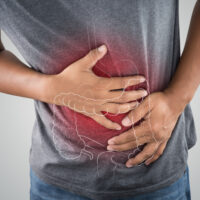Know About The Best Anti-Aging Products And Tips To Prevent Aging
Aging is not something that we have a control on. Whether we are ready or not, it is bound to happen, and wrinkles are going to appear. Rather than avoiding the fact, we can try our best to prolong the arrival of aging. We can do this by simply using the top anti-aging products and following some tips on anti-aging as listed below:

Top anti-aging products:
- Olay Regenerist Micro- Sculpting Cream
This is one of the best line-free creams by Olay that will give you the anti-wrinkle skin. It has a blend of vitamin B, hyaluronic acid, and amino-peptides. Hence, it is the best way to reduce age marks using this anti-aging product. - Neutrogena Healthy Anti-Wrinkle Night Cream
This night cream from Neutrogena will help you to wake up with fewer wrinkles. The cream is a vitamin-enriched moisturizer with an amazing formula that is clinically proven to rapidly reduce wrinkles. Hence, this cream will leave you looking more youthful. - The Better Skin Co.’s Skin Mirakle Cream
This cream is one of the best anti-aging product as it literally does it all! From tightening and firming the complexion to hydrating your skin and stimulating its circulation. It includes ingredients like algae extract, coconut oil, beeswax, and shea butter. It smooths away wrinkles and fine lines. The best part of this cream is that it’s all natural and enhanced. - Body Merry Retinol Surge Moisturizer
This is one of the most budget friendly anti-aging products which performs effectively especially at such a reasonable price. Retinol Surge Moisturizer contains the best ingredients that address skin problems like fine lines, uneven skin tone, wrinkles, and other skin aging problems. - Lancer The Method – Nourish
This is one of the costly anti-aging products but, it is effective as well. It is a balm that is loaded with avocado, olive fruit oils, and a proprietary oxygen-boosting complex. This formula deeply penetrates the skin to smooth over wrinkles and dull fine lines. - Dr. Dennis Gross C+ Collagen Deep Cream
Collagen is your best friend when it comes to youthful-looking skin. To postpone wrinkles and age spots, implement this anti-aging product in your skin care routine. The cream helps to increase a stronger skin barrier as it contains sunflower, camellia japonica seed oils, and rice bran. - Algenist GENIUS Ultimate Anti-Aging Cream
This brilliant blend from Algenist is totally worth the money invested. Its intense formula has featured the brand’s patent alguronic acid to firm the skin and fight aging. Also, the blend of collagen and microalgae oil helps to brighten the skin and improves the elasticity. Thereby, reducing wrinkles and softening the fine lines. - Fresh Lotus Youth Preserve Face Cream with Super 7 Complex
This is one of those anti-aging products that is known for its amazing moisturizing formula. It contains seven super-charged supplements that protect the skin from lines and wrinkles. Also, it gives your natural skin a boost.
These were some of the anti-aging products that will help you delay the aging process. These products make you look more youthful and glowing. However, only the products are not enough all the time. You can use some of the tips mentioned below along with these products to achieve that youthful glow:
- Quit smoking
This is one of the additional reason to some already existing reasons of why to quit smoking. Smoking leads to premature aging, stained teeth, wrinkles, and even increased risk of psoriasis. This is because you tend to develop wrinkles due to the facial motion and it also chokes the circulation of the blood vessels. - Consume more antioxidants
It’s no secret that a healthy diet can do wonders to your body, consuming fruits and vegetables that contain antioxidants are specifically amazing for your skin. This is because antioxidants help to protect your skin against free radicals in the environment. The free radicals tend to breakdown the skin’s elastin and collagen. Hence, preventing free radicals results in a more healthy and youthful skin. - Proteins are a must
On an average, a woman must consume minimum 46 grams of protein every day, and more if she is pregnant, performing rigorous activities, or is breastfeeding. Also, consuming adequate amount of protein helps you to reduce cravings, lose weight, and also maintain a youthful skin. Also, consuming enough protein is great for healthy-looking hair. - Reduce your sugar intake
Not only does consuming excess sugar increase the risk of obesity, heart disease, and diabetes, it also takes a toll on your skin. Also, consuming sugar in limited quantity won’t harm you as balance is the key. Just focus on having a healthy lifestyle and eating healthy food overall to obtain that youthful glow. - Exercise is a must
There are various benefits of exercising regularly and obtaining a youthful skin is one of them. Exercise makes you feel and look younger. Exercise tends to refresh your skin and improves blood circulation in your body. It also helps to tighten your skin.
These anti-aging products and tips that reduce anti-aging will help to slow your aging process. Also, remember that age is just a number and it is always about how you feel from the inside. Along with doing the above things, it is necessary to feel young from within as well. Always remember that what you feel from the inside is what reflects on the outside.





